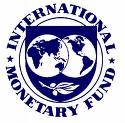01 juillet 2011
Définition des Offshore Financial Centers (étude du FMI
 Le FMI (Fonds monétaire international) développe une importante recherche en économie et finance, sous la direction, depuis mars 2007, de son conseiller et directeur de la recherche, Simon Johnson.
Le FMI (Fonds monétaire international) développe une importante recherche en économie et finance, sous la direction, depuis mars 2007, de son conseiller et directeur de la recherche, Simon Johnson.
Ahmed Zoromé, économiste du Fonds monétaire international www.imf.org a esquissé une définition statistique des Offshores Centers, qu’il a résumée dans un document de travail (« working paper » du FMI.
Pour lire l'étude de Mr Zoromé cliquer Offshore_Financial_Centers.pdf
L’économiste rappelle les trois critères généralement retenus dans toutes les définitions : l’orientation des activités financières, essentiellement vers les non-résidents, un environnement favorable souple, non contraignant, avec peu d’exigence des autorités de supervision en matière d’information et de transparence, l’absence de taxes ou leur très faible niveau.
12:31 Publié dans Art. 57 Prix de transfert;, article 123 bis, Article 155 A, Article 209B, article 238 A, Article 238 bis, ETNC Art 238 OA bis, EVASION FISCALE internationale, OCDE | Tags : offshore centers, paradis fiscaux, sophie fay, imf, fraude fiscale, fmi | Lien permanent | Commentaires (0) |  Imprimer |
Imprimer |  |
| ![]() Facebook | | |
Facebook | | | 
16 juin 2007
The Shadow Economies of 145 Countries by Friedrich Schneider
 The Size of the Shadow Economies of 145 Countries all over the World: First Results over the Period 1999 to 2003 by Friedrich Schneider
The Size of the Shadow Economies of 145 Countries all over the World: First Results over the Period 1999 to 2003 by Friedrich Schneider
the study ShadEconomyWorld145_2006.pdf
Using the DYMIMIC approach, estimates of the shadow economy in 145 developing, transition, developed OECD countries, South Pacific islands and still communist countries are presented. The average size of the shadow economy (in percent of official GDP) over 2002/2003 in developing countries is 39.1%, in transition countries 40.1%, in OECD countries 16.3%, South Pacific islands 33.4% and 4 remaining Communist countries 21.8%. An increasing burden of taxation, high unemployment and low official GDP growth are the driving forces of the shadow economy
Johannes Kepler University Linz, Department of Economics
CONCEPT OF OFFSHORE CENTERS (I.M.F. working paper)
avocat fiscal le cercle des fiscalites barreau de paris minefi suisse
07:00 Publié dans Fraude escroquerie blanchiment, perquisition fiscale et penale fiscale, USA et IRS | Tags : friedrich schneider, shadow economies, tax evasion, imf, fraude fiscale, fmi | Lien permanent | Commentaires (0) |  Imprimer |
Imprimer |  |
| ![]() Facebook | | |
Facebook | | | 



